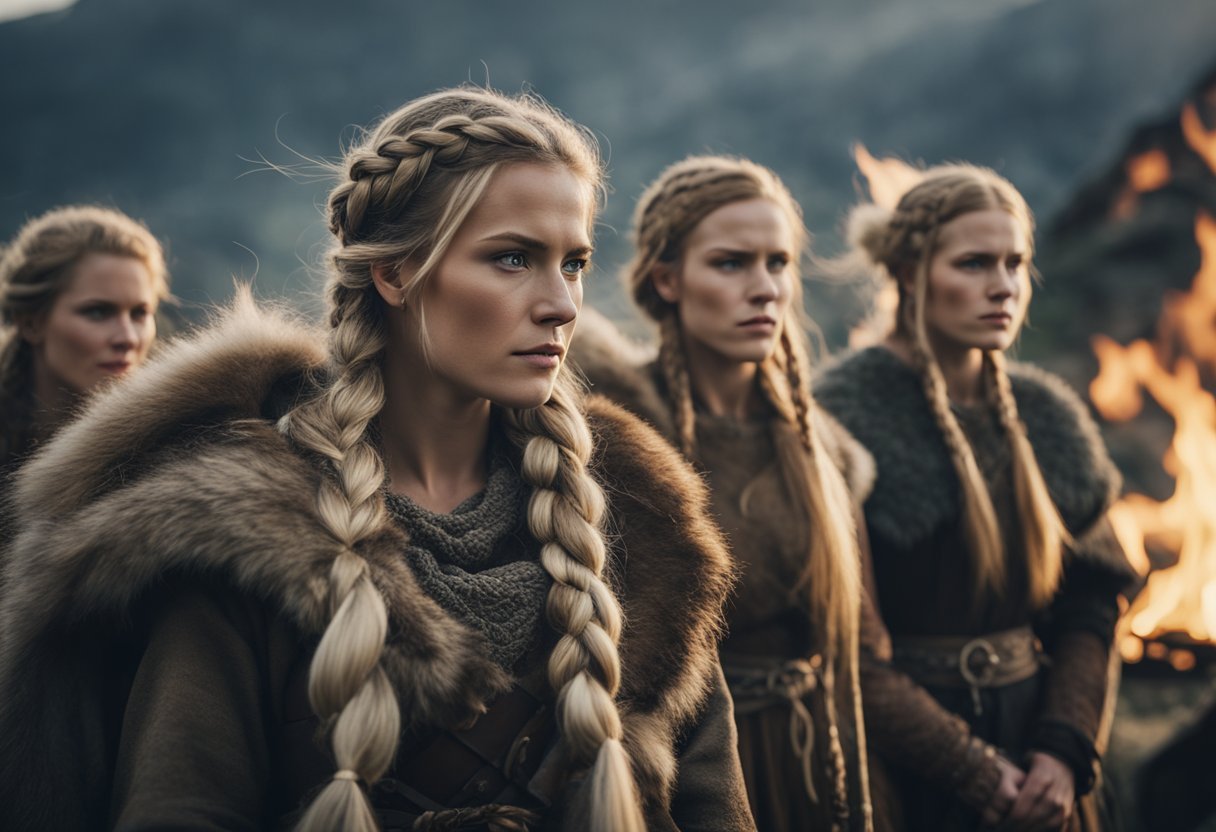The Viking Age is often depicted as a time of fierce warriors and grandiose raids, but the story of Viking women is equally compelling and deserving of attention. These women enjoyed a surprising degree of freedom and autonomy compared to their contemporaries in other parts of the world. Viking women could own property, initiate divorces, manage estates, and even inherit wealth, showcasing a progressive approach to women’s rights for that era.

Far from being confined to the household, Viking women participated in various essential occupations, from farming to managing estates while their husbands were away. They played critical roles not only in the domestic sphere but also in the economic and social fabric of their communities. Some even took part in raiding and trading expeditions, adding another layer to their multifaceted lives.
Marriage was an important event in Viking society, often occurring at a young age, and it brought about significant changes in the lives of women. Leaving their parental homes to start families with their new husbands was a common practice. These life transitions underscore the dynamic and influential roles Viking women held within their society.
Roles and Rights of Viking Women

Viking women played a vital role in their society, with significant social influence, property rights, and active roles in marriage and family life. They had more freedom and responsibilities compared to many other women of their time.
Social Status and Influence
Viking women held a notable position in Norse society. They weren’t just confined to their homes but engaged in various activities.
Some women even participated in trade and were known as shieldmaidens when they took up arms. They managed households and played essential roles in maintaining farms and businesses when men were away.
Women also had some level of influence in family decisions and could voice their opinions on various matters such as marriages and disputes. While still a male-dominated society, their contributions were recognized and respected.
Property Ownership and Inheritance
Unlike many contemporary societies, Viking women had significant property rights. They could own land, livestock, and other valuable assets.
Inheritance laws allowed daughters to inherit property and wealth from their parents. Widows had the right to manage their late husbands’ estates, ensuring their financial independence.
Property ownership didn’t just benefit them economically but also enhanced their societal status. This level of autonomy in economic matters set Viking women apart from many other European women of the same era.
Marriage and Family Life
Marriage was a crucial event in a Viking woman’s life, often occurring at a young age. Marriages were typically arranged by families, but women had some say in the matter.
Once married, women were responsible for managing the household, which included food preparation, textile production, and child-rearing. They also played a part in family businesses and agriculture.
Divorce was permissible and could be initiated by either party. Women retained the dowry and could sue for the return of gifts given during marriage if it ended. This aspect of Viking life provided them a level of protection and independence that was uncommon in other societies of the time.
Myth-Busting Stereotypes

Many commonly held beliefs about Viking women are misleading. This section explores how Viking women were more than just homemakers, taking on roles as warriors and skilled craftswomen.
Women Warriors: Shieldmaidens
There’s a stereotype that Viking warriors were always men. In reality, some Viking women, known as shieldmaidens, fought valiantly in battles. Shieldmaidens like Lagertha, a legendary figure, wielded swords and shields, defending their people.
Archaeological findings, such as the Birka warrior grave, reveal women buried with weapons, suggesting their involvement in combat. Illustrations from sagas and ancient texts often show women donning armor and participating in raids. These women were celebrated for their bravery and played a crucial role in their societies.
Beyond Homemakers: Crafts and Trades
Viking women did much more than just manage their households. They were skilled in various crafts and trades. They spun wool, wove textiles, and crafted clothing, which were vital for the community. Women were also involved in pottery, jewelry making, and even trade.
Women managed farms and oversaw production. When men were away on raids, Viking women maintained the economy, handling both household and business affairs. Some even traveled on trade expeditions, dealing in goods like furs, textiles, and other valuable items. This active participation showcased their versatility and importance.

